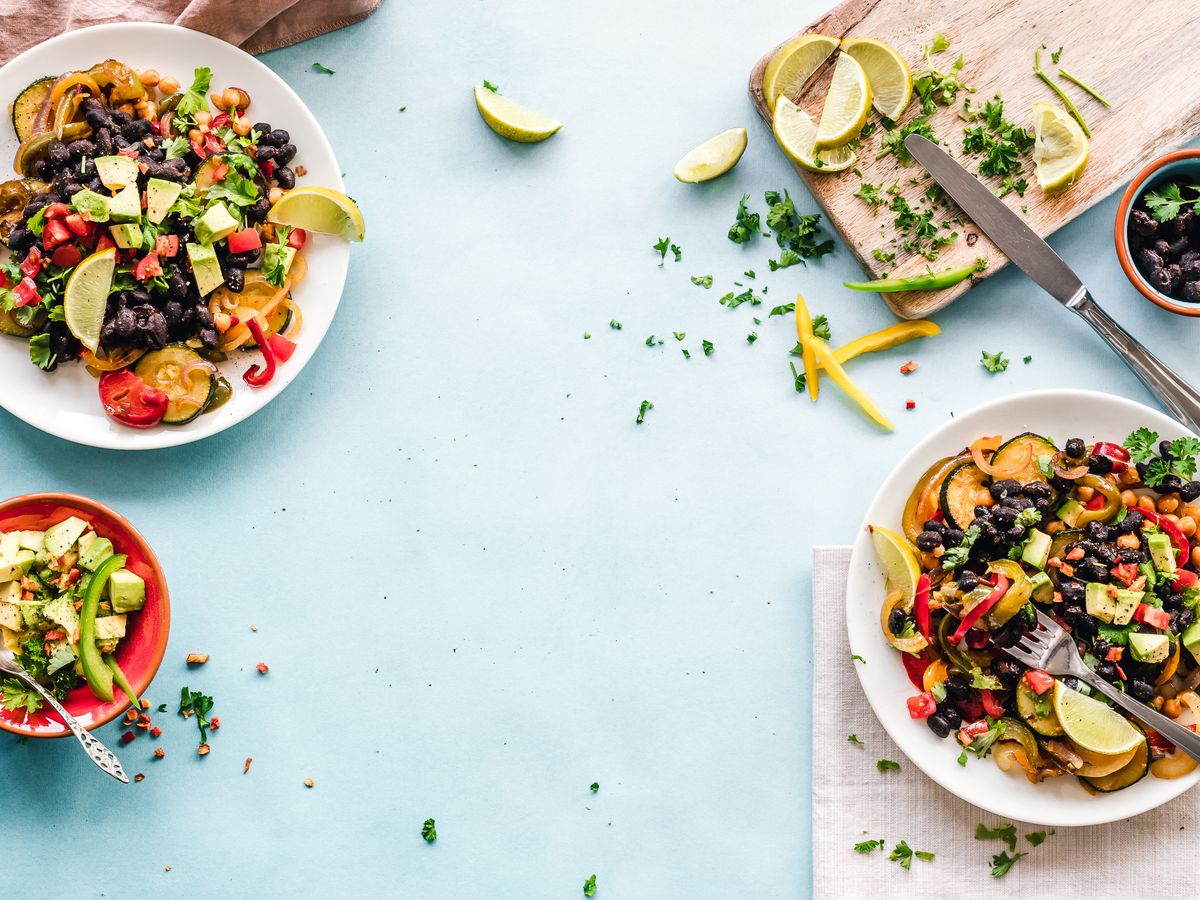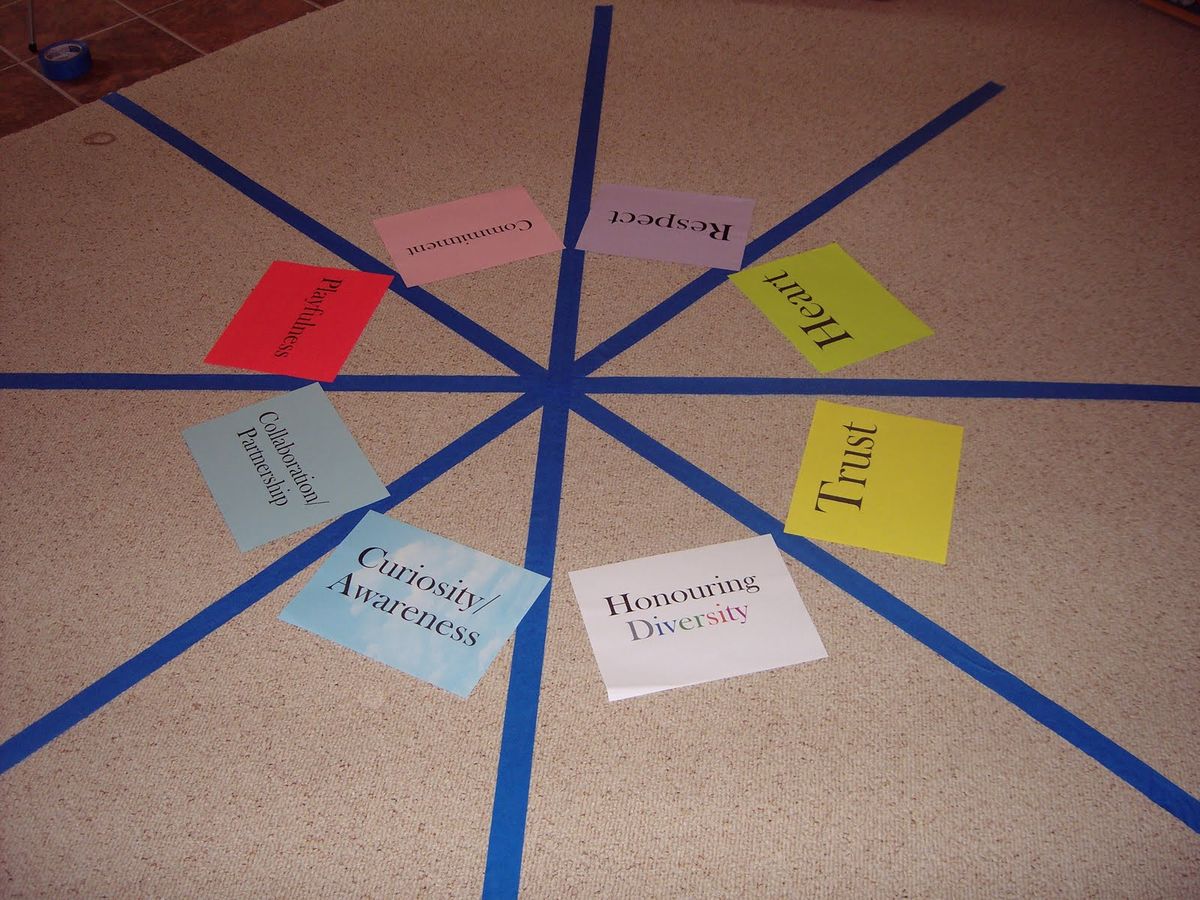The ketogenic diet, commonly known as the keto diet, has gained immense popularity for its potential to promote weight loss and improve overall health. By drastically reducing carbohydrate intake and increasing fat consumption, the keto diet aims to shift the body into a state of ketosis, where it burns fat for fuel instead of carbohydrates. This article will explore effective strategies to help you navigate your keto journey successfully, from understanding the basics to maintaining long-term weight loss.
Key Takeaways
- The keto diet involves reducing carbohydrate intake and increasing fat consumption to shift the body into ketosis.
- Setting realistic goals and avoiding common mistakes is crucial for long-term success on the keto diet.
- Meal planning and choosing keto-friendly foods can simplify your keto journey and enhance your chances of success.
- Tracking your progress with apps and tools can help you stay on track and make necessary adjustments.
- Incorporating exercise and staying hydrated are essential components of a successful keto lifestyle.
Understanding the Basics of the Keto Diet
What is the Keto Diet?
The ketogenic diet, or keto diet, is a very low carb, high fat diet that shares many similarities with the Atkins and other low-carb diets. It involves drastically reducing carbohydrate intake and replacing it with fat. This reduction in carbs puts your body into a metabolic state called ketosis.
How Does the Keto Diet Work?
When you follow a keto diet, your body is forced to use a different type of fuel. Instead of relying on sugar (glucose) that comes from carbohydrates, the keto diet aims to force your body into using ketone bodies, a type of fuel that the liver produces from stored fat. This shift in fuel source can help you lose weight and improve your health.
Benefits of the Keto Diet
The keto diet offers numerous health benefits, including:
- Weight Loss: By switching your body’s fuel source to fat, you can burn fat more effectively.
- Improved Mental Focus: Ketones are a great source of fuel for the brain.
- Increased Energy Levels: Fat is a more reliable, long-lasting source of energy compared to carbs.
- Better Blood Sugar Control: The keto diet can help manage and prevent diabetes.
The keto diet isn’t just about losing weight; it’s about transforming your body’s metabolism and improving overall health.
By understanding these basics, you’re well on your way to making informed decisions about whether the keto diet is right for you.
Getting Started with Your Keto Journey
Starting a keto diet can be both exciting and overwhelming. Here’s a guide to help you kick off your keto journey on the right foot.
Setting Realistic Goals
Before diving into the keto diet, it’s crucial to set realistic goals. Ask yourself what you want to achieve and how you plan to get there. Whether it’s weight loss, improved energy levels, or better mental clarity, having clear objectives will keep you motivated.
Essential Keto Diet Foods
Stocking up on the right foods is essential for success. Here are some must-haves for your keto pantry:
- Healthy fats: Avocados, olive oil, and coconut oil
- Proteins: Grass-fed meat, fatty fish, and eggs
- Low-carb vegetables: Spinach, kale, and broccoli
- Nuts and seeds: Almonds, chia seeds, and flaxseeds
Common Mistakes to Avoid
Starting a new diet can come with its own set of challenges. Here are some common mistakes to avoid:
- Not drinking enough water: Hydration is key, especially on a keto diet.
- Skipping vegetables: Ensure you’re getting enough low-carb vegetables at every meal.
- Ignoring portion control: Even keto-friendly foods can lead to weight gain if consumed in large quantities.
Remember, the first rule of every diet is to drink lots of water. Staying hydrated helps enhance the effectiveness of your diet and keeps you feeling full.
By keeping these tips in mind, you’ll be well on your way to a successful keto journey.
Meal Planning for Keto Success
Planning your meals ahead of time is crucial for staying on track with your keto diet. By creating a weekly meal plan, you can ensure that you have all the necessary ingredients and avoid succumbing to food temptations. This approach not only helps you stick to your diet but also saves you time and effort throughout the week.
When it comes to keto-friendly recipes, there are countless options available online. From breakfast to dinner, you can find recipes that fit your taste and dietary needs. Websites, food blogs, and cookbooks offer a variety of meal ideas that you can use to build your own custom menu.
Grocery shopping can be a daunting task, but with a well-thought-out list, it becomes much more manageable. Focus on buying essential keto diet foods such as meats, fish, eggs, dairy, nuts, seeds, and low-carb vegetables. Avoid processed foods and high-carb items to stay within your macronutrient limits.
Remember, the journey to weight loss is as much about mental transformation as it is about physical changes. By planning your meals and sticking to your diet, you can achieve weight loss in two months with realistic goals, the right diet plan, macronutrient balance, hydration, and avoiding certain foods. It’s a marathon, not a sprint.
Tracking Your Progress
Using Apps and Tools
One of the best ways to track what you are eating is by using a calorie tracking app and a scale. By using both, you will be much more accurate in knowing what you are consuming and have all the info you need to start losing weight consistently again. When it comes to tracking calories, I prefer to use MyFitnessPal (for general macro tracking) and Cronometer (for more specific macro and micronutrient tracking). If you’d like to get started with tracking your calories using these apps, check out our guide on the topic — It has everything you need to know so that you can set up MyFitnessPal and Cronometer for your specific macronutrient needs.
Keeping a Food Journal
In the beginning, it may seem like the only thing you do is count and track carbs all day, but we promise, it becomes more intuitive. Track progress. Take photos, measurements, and monitor your weight every 3 to 4 weeks. If progress stops, re-examine your daily intake. Make sure you’re getting enough vegetables at every meal and keeping portion sizes moderate.
Adjusting Your Plan as Needed
It’s essential to have a follow-up to monitor your progress and make any necessary adjustments to your treatment plan. This process ensures that everything is tailored to your needs, making your weight loss journey as effective as possible.
Remember, the first rule of every diet is to drink lots of water. Staying hydrated helps enhance the effectiveness of your diet and keeps you feeling full.
Overcoming Keto Flu
Symptoms of Keto Flu
When I first started the keto diet, I was hit with what’s commonly known as the keto flu. The symptoms can be quite a drag and include:
- Stomach aches or pains
- Nausea
- Dizziness
- Sugar cravings
- Cramping
- Muscle soreness
- Feeling cranky
- Diarrhea or constipation
- Trouble falling asleep or staying asleep
- Poor focus and concentration
- Brain fog
Effective Remedies
Luckily, there are several ways to combat these symptoms. Staying well-hydrated is crucial. Drinking plenty of water helps flush out toxins and keeps your body functioning smoothly. Supplementing electrolytes is another key strategy. I found that consuming mineral-rich foods and, if necessary, mineral supplements, made a huge difference. Here are some tips that worked for me:
- Drink water with a pinch of salt to maintain electrolyte balance.
- Eat avocados, nuts, and seeds for magnesium and potassium.
- Consider taking electrolyte supplements if you’re still feeling off.
Remember, the first rule of every diet is to drink lots of water. Staying hydrated helps enhance the effectiveness of your diet and keeps you feeling full.
Preventing Keto Flu
Prevention is always better than cure, right? To minimize the discomfort of keto flu, try gradually easing into the diet. Instead of cutting carbs drastically overnight, reduce your intake slowly over a week or two. This gives your body time to adjust to the new fuel source. Here are some steps to help you ease into it:
- Start by cutting out sugary drinks and snacks.
- Gradually reduce your intake of starchy vegetables and grains.
- Increase your intake of healthy fats like olive oil, coconut oil, and fatty fish.
- Monitor your body’s response and adjust as needed.
By following these steps, you can make your transition to a keto lifestyle much smoother and more enjoyable.
Incorporating Exercise into Your Keto Lifestyle
When it comes to the keto diet, exercise is key for effective weight loss. The more frequently you exercise, the quicker your body depletes its glycogen stores, helping you transition into ketosis faster. I recommend a mix of high-intensity interval training (HIIT) and low-intensity steady-state (LISS) exercises like walking or jogging. This combination helps balance your blood sugar and aids your body in entering ketosis.
Balancing exercise and nutrition is crucial for anyone on a keto diet. Your body uses different types of energy for fuel, including carbohydrates, fats, and amino acids. To get the most out of your workouts, make sure you’re consuming enough fats and proteins to fuel your body. Remember, the goal is to burn fat for energy, so keep your carb intake low.
Staying motivated can be challenging, but it’s essential for long-term success. Here are a few tips to keep you going:
- Set Realistic Goals: Start with small, achievable goals and gradually increase them.
- Track Your Progress: Use apps or a journal to monitor your workouts and see your improvements over time.
- Find a Workout Buddy: Exercising with a friend can make workouts more enjoyable and keep you accountable.
- Mix It Up: Vary your workouts to keep things interesting and prevent boredom.
The journey to weight loss is as much about mental transformation as it is about physical changes.
By incorporating these strategies, you’ll find it easier to stick to your keto diet and achieve your weight loss goals.
Eating Out on a Keto Diet

Eating out while sticking to a keto diet can be challenging, but it’s definitely doable with a bit of planning and creativity. Almost every restaurant you go to will have a meal that’s ketogenic diet friendly, and with a little creativity, you will never have to resort to a carb-heavy meal just because you went out to eat with friends.
Supplements to Enhance Your Keto Diet
Essential Vitamins and Minerals
When you’re on a keto diet, it’s crucial to ensure you’re getting the right vitamins and minerals. Electrolytes like sodium, potassium, and magnesium are particularly important because your body tends to flush out these minerals more quickly on a low-carb diet. I always make sure to include a good multivitamin and mineral supplement to cover my bases.
Electrolyte Supplements
Electrolyte supplements can be a game-changer, especially when you’re just starting out. They help prevent the dreaded keto flu by keeping your body’s mineral balance in check. I usually go for a supplement that includes a mix of sodium, potassium, and magnesium. Here’s a quick breakdown of what I look for:
| Electrolyte | Importance |
|---|---|
| Sodium | Prevents muscle cramps and headaches |
| Potassium | Supports heart and muscle function |
| Magnesium | Aids in muscle relaxation and sleep |
Exogenous Ketones
Exogenous ketones are another supplement I find incredibly useful. They can help raise your body’s ketone levels, making it easier to stay in ketosis. I usually take them before a workout for an extra energy boost. They come in various forms like drinks and powders, so you can choose what works best for you.
Remember, while supplements can be helpful, they should never replace a balanced diet. Always consult with a healthcare provider before starting any new supplement regimen.
By incorporating these supplements into my routine, I’ve found it much easier to maintain a healthy meal plan and stay on track with my keto diet. They provide that extra support, especially during the initial stages when your body is adjusting to a new way of eating.
Real-Life Success Stories

Inspiring Transformations
I’ve come across countless inspiring transformations from people who have embraced the keto lifestyle. One story that stands out is from a member of our online keto community who combined keto with intermittent fasting for weight loss. The results were phenomenal, not just in terms of shedding pounds but also in overall health improvements. This person managed to lose over 50 pounds in six months and reported feeling more energetic and mentally sharp. It’s amazing what a dedicated approach can achieve!
Challenges and How to Overcome Them
Every journey has its ups and downs, and the keto diet is no exception. One common challenge is dealing with the initial phase, often referred to as the ‘keto flu.’ Many people experience symptoms like fatigue and headaches. However, effective remedies like staying hydrated and ensuring adequate electrolyte intake can make a big difference. Another challenge is maintaining the diet in social situations, but with some planning and creativity, it’s entirely possible to navigate these hurdles.
Tips from Successful Keto Dieters
Here are some tips from those who have successfully navigated their keto journey:
- Plan Your Meals: Having a weekly meal plan can help you stay on track and avoid temptations.
- Stay Hydrated: Drinking plenty of water is crucial, especially when you’re starting out.
- Pair Low-Intensity Exercises with Fasting: This combination can enhance your weight loss efforts without overwhelming your body.
- Mental Transformation: Remember, the journey to weight loss is as much about mental transformation as it is about physical changes.
The journey to weight loss is as much about mental transformation as it is about physical changes.
By focusing on these aspects, I’ve seen genuine progress in my weight loss journey, making the keto diet a cornerstone of my health regimen.
Maintaining Your Weight Loss Long-Term

Transitioning to Maintenance Mode
Transitioning off the ketogenic diet can be scary, but following these eight tips and our healthy food list can help you keep the weight off for good. The key is to gradually reintroduce carbs while monitoring your body’s response. This way, you can find a balance that maintains your weight without feeling deprived.
Sustainable Eating Habits
It’s not about quick fixes but long-term changes you can maintain over time. Focus on whole, nutrient-dense foods and avoid processed items. Here are some tips:
- Plan your meals ahead of time to avoid impulsive eating.
- Keep healthy snacks on hand to curb hunger between meals.
- Stay hydrated to help control your appetite.
Dealing with Setbacks
You might have some weeks where it seems you haven’t lost anything — then you’ll weigh yourself a week or two later and be down 3-4 pounds. The key to long-term weight loss is to stick with your plan, be patient, and don’t get discouraged. If you find that your results have been stalling for over a month, then you will need to make adjustments to your diet and lifestyle so that you can break through your plateau.
Remember, the journey to weight loss is as much about mental transformation as it is about physical changes.
The Role of Hydration in Keto Diet
When you’re on a keto diet, staying hydrated is crucial. Your body excretes more water when carbohydrates aren’t present, so you need to drink plenty of fluids, especially water. Aim to drink half of your body weight in ounces of water daily. This helps prevent dehydration and keeps your body functioning optimally.
Importance of Staying Hydrated
Hydration is key to overall health, but it’s even more important on a keto diet. Without enough water, you might experience headaches, dizziness, and fatigue. Drinking enough water helps you avoid these issues and supports your weight loss journey.
Best Hydration Practices
Here are some tips to stay hydrated on a keto diet:
- Drink water throughout the day, not just when you’re thirsty.
- Include electrolyte-rich drinks to balance your sodium and potassium levels.
- Eat hydrating foods like cucumbers, lettuce, and watermelon.
Hydrating Foods and Drinks
Incorporate these hydrating foods and drinks into your keto diet:
| Food/Drink | Benefits |
|---|---|
| Cucumbers | High water content, low in carbs |
| Lettuce | Hydrating and keto-friendly |
| Watermelon | Hydrating but watch the carb count |
| Electrolyte drinks | Replenish lost minerals |
Remember, staying hydrated is not just about drinking water; it’s about maintaining a balance of fluids and electrolytes in your body.
Conclusion
Embarking on a keto diet for weight loss can be a game-changer if done right. Remember, it’s not just about cutting carbs; it’s about creating a sustainable lifestyle that you can maintain in the long run. From understanding your body’s needs to integrating exercise and hydration, every step plays a crucial role. Don’t forget to monitor your progress and make adjustments as needed. Whether you’re combining keto with other strategies like Phentermine or B12 shots, the key is to find what works best for you. Stay committed, stay informed, and most importantly, stay patient. Your journey to a healthier you is a marathon, not a sprint. Happy dieting!
Frequently Asked Questions
What is a keto diet?
A keto diet is a low-carb, high-fat diet designed to put your body into a metabolic state called ketosis, where fat is burned for energy instead of carbohydrates.
How does the keto diet help with weight loss?
The keto diet helps with weight loss by reducing insulin levels, which allows the body to burn stored fat for energy. Additionally, the high-fat content keeps you feeling full longer, reducing overall calorie intake.
What foods can I eat on a keto diet?
On a keto diet, you can eat foods like meat, fish, eggs, butter, nuts, healthy oils, avocados, and low-carb vegetables. Avoid foods high in carbs such as grains, sugars, legumes, and most fruits.
What are the common side effects of starting a keto diet?
Common side effects when starting a keto diet, often referred to as the ‘keto flu,’ include headaches, fatigue, dizziness, nausea, and irritability. These symptoms usually subside within a week.
How long does it take to enter ketosis?
It typically takes 2-4 days to enter ketosis if you consume less than 50 grams of carbs per day. However, the time can vary depending on individual factors like metabolism and activity level.
Can I exercise on a keto diet?
Yes, you can exercise on a keto diet. While you may experience a decrease in performance initially, your body will adapt over time. Focus on low-intensity and endurance exercises during the adaptation period.
Is the keto diet safe for everyone?
The keto diet is generally safe for most people but may not be suitable for individuals with certain medical conditions, such as pancreatitis, liver failure, or disorders of fat metabolism. Always consult with a healthcare provider before starting any new diet.
Can I eat fruits on a keto diet?
Most fruits are high in carbs and should be limited on a keto diet. However, small portions of berries like strawberries, blueberries, and raspberries can be consumed in moderation.
- Sustainable Weight Loss Strategies: Achieving Long-Term Success – June 16, 2024
- Cycling for Weight Loss: Pedal Your Way to a Healthier You – June 15, 2024
- Weight Loss Coaching: Personalized Guidance for Effective Results – June 15, 2024




